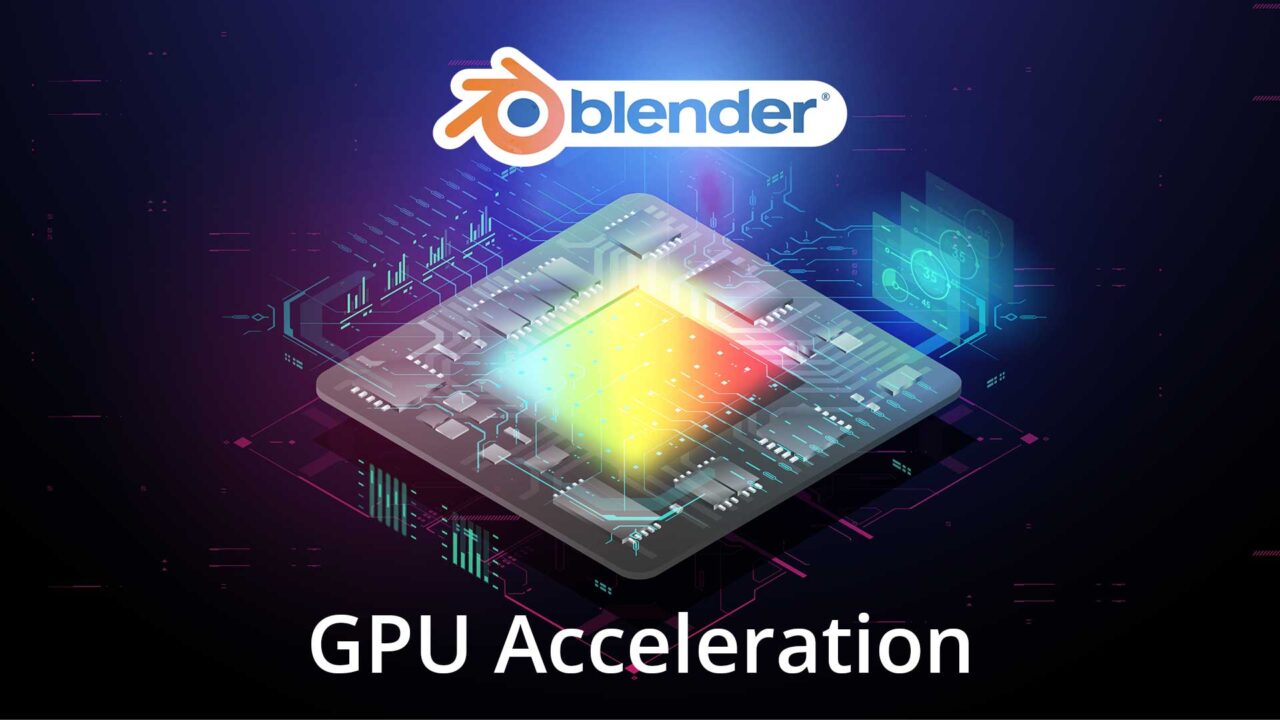The DJI Osmo Pocket is DJI’s smallest handheld video stabiliser.
The pocket-sized device is easy to take with you on any adventure. It promises easy, high quality and smooth video no matter where you go.
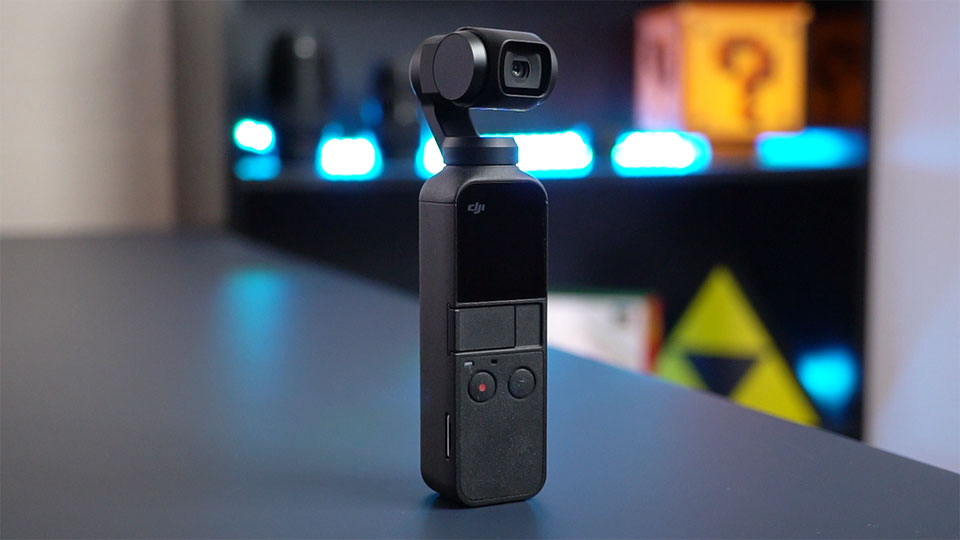
But does it deliver?
Technical Specifications
Don’t bore me with the details! Just give me the facts!
| Feature | Specs |
|---|---|
| Release Date | December 2018 |
| Price | Approx $350 USD |
| Dimensions | 12.19cm x 3.69cm x 2.8cm (4.8” x 1.45” x 1.1”) |
| Weight | 116g (4oz) |
| Sensor | 1/2.3” CMOS (same as iPhone XS) |
| Field of View (FOV) | 80 |
| Megapixels | 12 |
| Aperture | F/2 |
| Video Capabilities | 4K @ 60 FPS, 1080p at 120 FPS |
| Image Capabilities | JPEG + DNG RAW, max 4000 x 3000 pixels |
| Additional Capabilities | Panorama, Timelapse, Motion Lapse, Active Track |
| Stabilization | 3-Axis Mechanical Stabilisation |
| Screen | 2.74cm (1.08”) Touch Screen LCD |
| Audio | 2 Microphones (bottom + front) |
| Storage | Micro SD, 256GB Max |
| Battery Life | 140 minutes |
| Charging | USB-C |
| App | DJI Mimo App (free) |
| Case | Soft Shell Protective Case |
The DJI Osmo Pocket is a tiny device, measuring in at only 12.19cm x 3.69cm x 2.8cm (4.8” x 1.45” x 1.1”) and weighing 116g (4oz). Here it is next to a ruler.
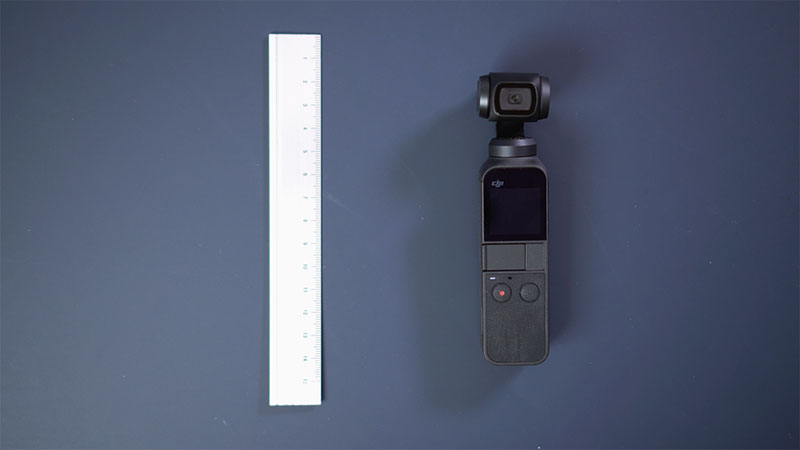
The DJI Osmo Pocket features a 1/2.3” CMOS sensor, which is the same size as the iPhone XS. It can capture 4K video at a frame rate of up to 60FPS. You can also shoot slow motion videos with up to 120FPS if you go down to 1080p.
It can capture images in JPEG or RAW (DNG) file format at a resolution of up to 4000×3000.
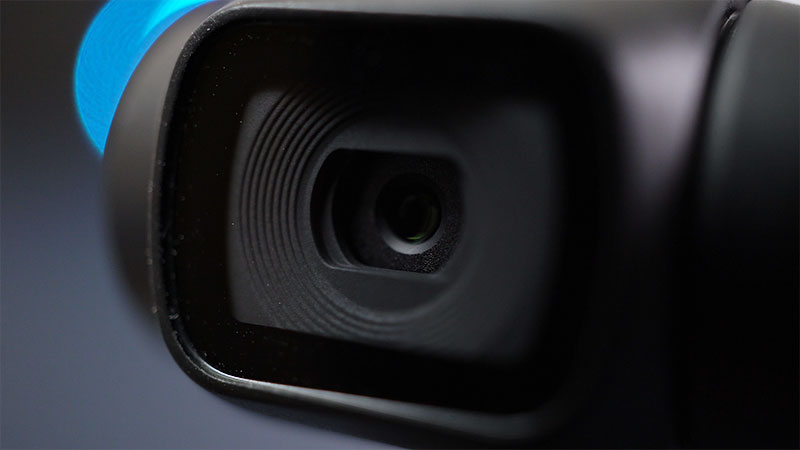
The sensor sits behind a lens with a Field of View of 80°. The lens is mounted on a mechanically stabilised 3-axis gimbal, promising smooth motion and sharp images no matter where you go.
On the front of the DJI Osmo Pocket you will find a 2.74cm (1.08”) Touch Screen LCD. This touch screen allows you to quickly adjust your settings or review your videos and images without having to attach a camera or a mobile phone.
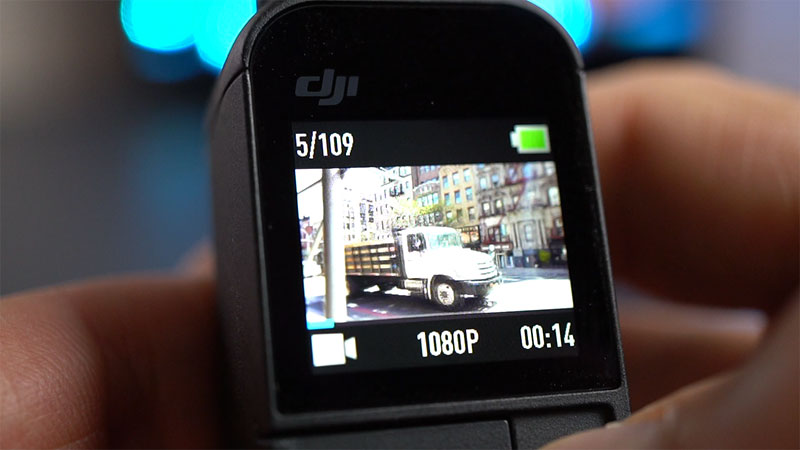
The DJI Osmo Pocket has 2 microphones for audio. One is located at the bottom of the device and one sits at the front, just below the display.
All media is recorded to a Micro SD card that slots in on the side and the maximum supported capacity is 256GB.
The battery life of the DJI Osmo Pocket is rated to last 140 minutes and you can charge the device up via a USB-C connector. The connector is located at the bottom of the Osmo Pocket.
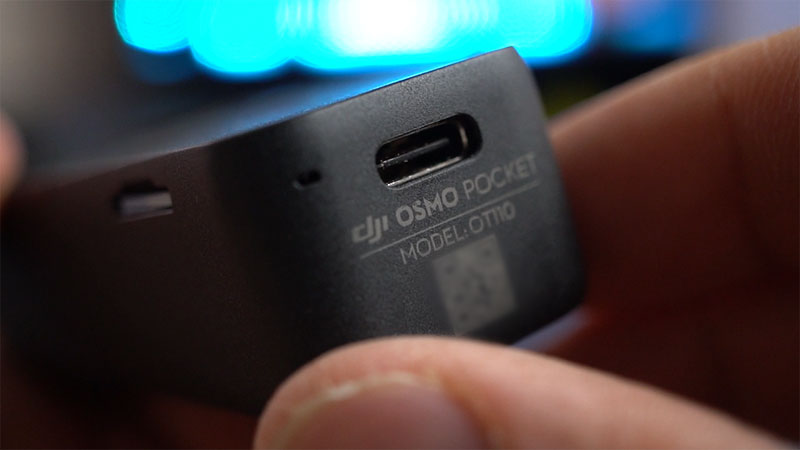
When you buy the DJI Osmo Pocket, you will also receive a small protective case. The case is made from rubber and protects the gimbal when you stuff it into your pocket or into your bag. The flap is easy to use and it only takes a few seconds to free the Osmo Pocket from the case or put it back in.
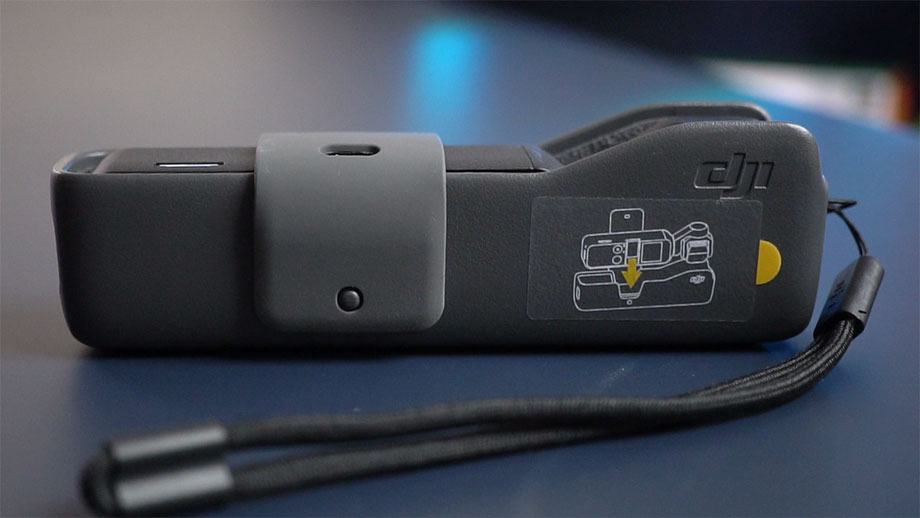
Field Test
In order to put the DJI Osmo Pocket through it’s paces, I have been using it extensively over the last few months.
I took it with me on weekend trips and outings with friends. It came along when we went to the United States. I also spent a couple of days out, specifically testing how the Osmo would handle certain situations.
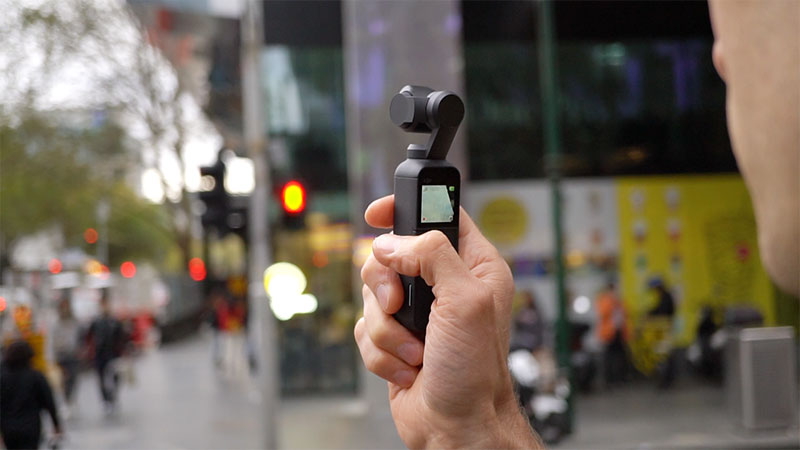
Here’s what I found!
Usability
In terms of usability, the DJI Osmo Pocket is hard to beat. It takes me less than 10 seconds to get set up. Just pull it out of your pocket and out of the protective case. Turn it on – takes about 5 seconds. Press the record button. And that’s it!
Especially compared to my other Gimbals (DJI Osmo, Zhiyun-Tech Crane), the Osmo Pocket is ridiculously easy to use. The touch screen is also a nice ‘touch’ and makes adjusting settings or reviewing your footage easy. However, if you have fat fingers like myself you may find the small size a little fiddly at times.
Battery life is a decent 2 hours. For most of our outings that is plenty of time to shoot plenty of video footage or take a large number of photos. I only ran up against this limit when I tried to capture motionlapses over a long period of time. Carrying a charger along with you if you’re gone for a weekend is recommended.
Video Quality & Stabilization
The video quality at 4K is fantastic. The image comes out nice and crisp and, shooting at 60FPS, gives you buttery smooth slow motion. In low-light situations I did notice a fair amount of grain. This is caused by the DJI Osmo Pocket’s rather small sensor. However, I did not find this to be a deal breaker.
While slow motion at 120 FPS in 1080p gave great slow motion, the image quality did start to suffer. The video turned out fairly grainy and just not as crisp as what I would have expected when shooting FHD (1080p) video.
I am pretty happy with the stabilization of the DJI Osmo Pocket. Panning and tilting movements are amazingly smooth due to the mechanically stabilised gimbal.
When walking, you will notice a fair amount of up-and-down movement. It was definitely not as smooth as footage from my DJI Osmo, but I didn’t mind. Reminded me more of a 3D shooter than a flying-drone shot.
Occasionally I also noticed the gimbal head ‘adjusting’ the direction with a bit of a jerky movement, but again, for the most part, the video was surprisingly smooth. Best check the sample videos in the review above :)
Image Quality
The image quality of the DJI Osmo Pocket is OK. The device is definitely designated for video rather than photography, but you can get some decent shots.
Here is an example fully zoomed out of Degraves street in Melbourne.
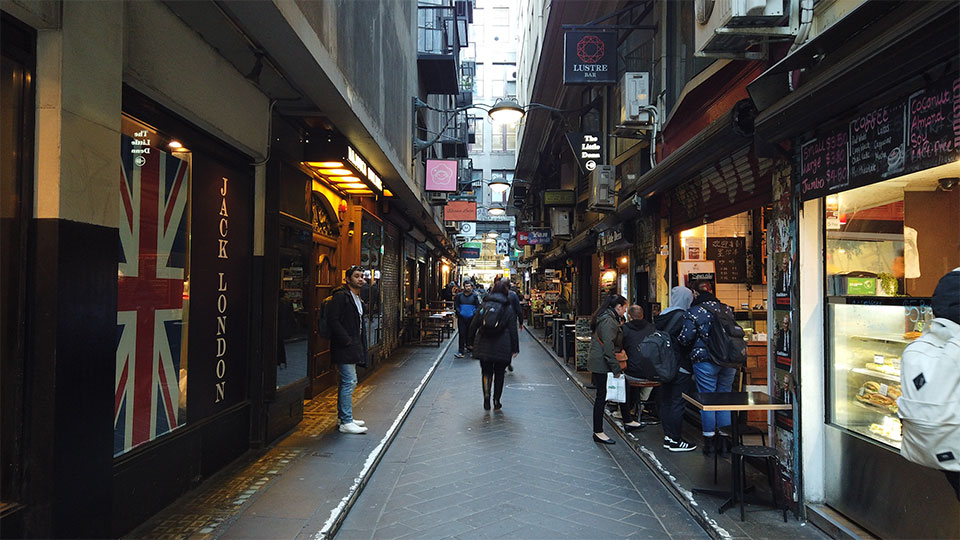
And here is the same image zoomed in and cropped to 100%.
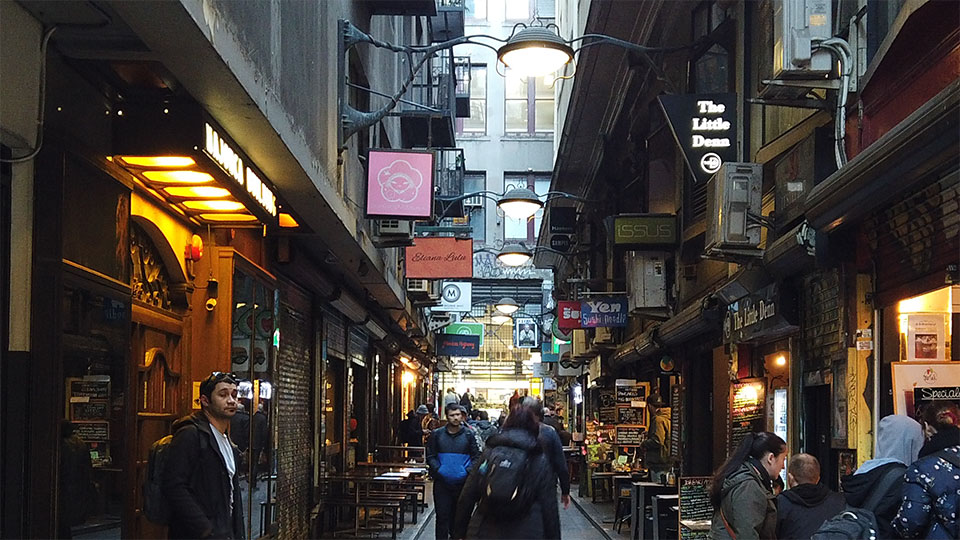
While you can take nice photos on the DJI Osmo Pocket, if you are into photography, I would recommend getting a compact camera or even using your phone instead.
You can shoot in RAW with the Osmo Pocket which gives you a lot of control if you want to post process your images. However, the quality did not hold up well if compared to a RAW image shot on a mirrorless camera or a DSLR.
Active Track, Motionlapses and Additional Features
If you find the small LCD screen to fiddly or you want access to more options, you can connect your phone to the DJI Osmo Pocket. A small adapter connects your iPhone or Android phone directly to the device.
To access the Osmo Pocket’s interface you need to use the free DJI Mimo app. The app is easy to use and unlocks a number of additional features such as Active Track.
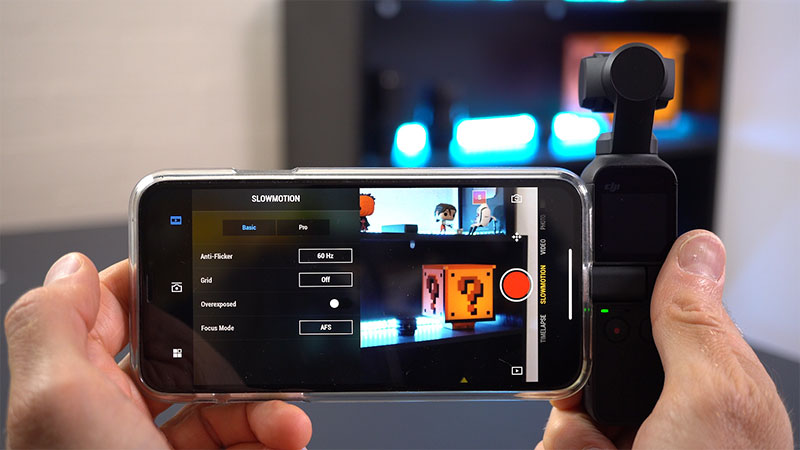
Active Track allows you to tap and drag an outline around an object on your phone and the Osmo Pocket will try to follow the movement of this object automatically.
While this sounded great in theory, the practice did not hold up quite as well. We tried tracking our cats (as well as other moving objects), and the DJI Osmo Pocket lost track of it constantly.
It might work better if you have very simple objects against clear backgrounds that aren’t moving too fast, but I personally wouldn’t make this feature my main reason for purchase.
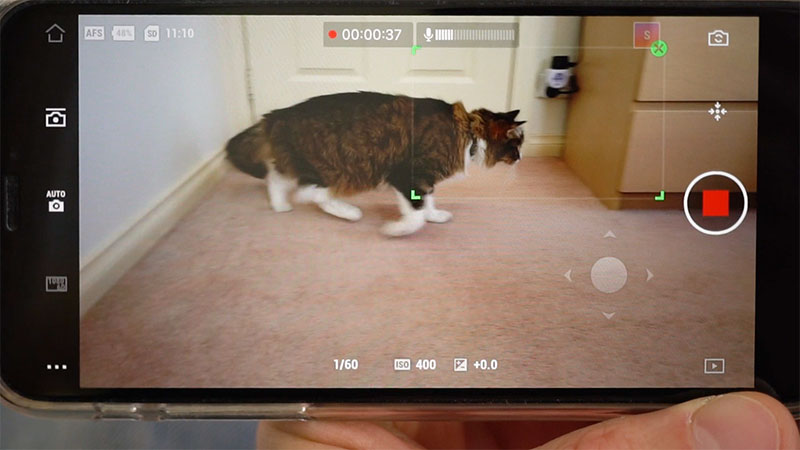
One feature I really enjoyed using though on the DJI Osmo Pocket is Motionlapses. Motionlapses are timelapses where the gimbal is moving. They are super easy to set up, you just define the duration and the interval, and you’re good to go! Check out the video above for some examples :)
The Issue With the Battery
One concern that I failed to address in the video is the issue with the battery. A big limitation of the DJI Osmo Pocket is that the battery is inbuilt into the device. While this gives it more portability, it means that you can’t just bring spares with you. It also means that if the battery every fails, you can’t replace it.
The battery is rated to last about 400 charges. This is a lot of recording time, but eventually you might get to a point where the battery’s capacity drops below a level you’re happy with.
At that point you will have to bring the DJI Osmo Pocket back to DJI to have the battery replaced. With the battery warranty only lasting 6 months, it is then likely you may have to pay for the favour.
I am still far off from the 400 charges and will likely be able to use the DJI Osmo Pocket for years before I get there, but it is good to be aware of the limitations of the inbuilt battery.
Verdict
The main reason I like the DJI Osmo pocket is simply lack of friction. It is just so easy to use. Less than 10 seconds from your pocket to shooting fully stabilised video. I can’t claim that of any of our other camera stabilisers.
The video footage at 4K, 60FPS looks great. Stabilisation works well and you can capture some really nice, organic looking shots without much effort at all.
Personally I would avoid shooting in 1080p though unless I was in a very well lit area to make sure the quality does not drop too low. If you are in a good spot though with lots of light, shooting slow motion at 120FPS is a lot of fun!
The LCD display on the back can be a little bit fiddly (if you have fat fingers), but I am just grateful that I can even see what I am recording without much setup cost. No need to attach my phone. No need to mount a camera or an external monitor. The touch was very responsive though and the menus are very logically laid out. I had no problem with the usability of the DJI Osmo Pocket at all.
In terms of photos, I likely will be using my phone instead (iPhone XS) as it just captures better images. However, if the DJI Osmo Pocket is all you have on you, it will do a decent job, especially for wider shots such as landscapes.
I enjoyed using the DJI Mimo app, though the additional features such as Active Track didn’t really work as well as expected. On the other hand, motionlapses were amazing and are super simple to setup and shoot.
If you are looking for a device to make shooting high quality handheld video easy, go and check out the DJI Osmo Pocket. I certainly know it has limitations, but I appreciate it for being the most easy-to-use gimbal I have ever owned.



